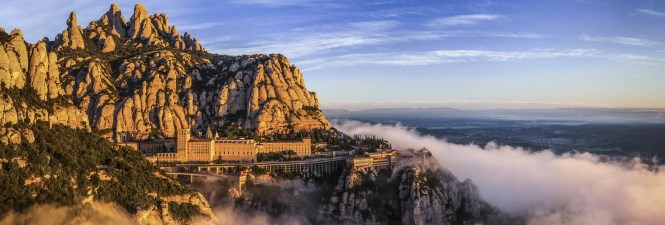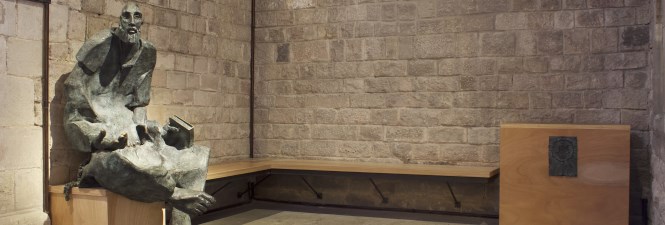

Enjoy two of Europe's most important pilgrims' ways as they pass through Barcelona: the Way of Saint James and its main stop-off point, Montserrat Monastery, and the Ignatian Way, which has the cave of Sant Ignasi in Manresa as its centrepiece. Places that invite pilgrims to go beyond their spiritual search at the gentle pace dictated by nature.

This is the oldest spiritual route in Europe. It dates from the early 9th century and ends at the tomb of Saint James the Apostle in Santiago de Compostela Cathedral (in the north-east of the Iberian Peninsula). Barcelona has been a necessary stop-off point for many pilgrims arriving by boat since the Middle Ages.
There are places in the city commemorating the apostle. They include the church of Sant Jaume, close to La Rambla, and Plaça Sant Jaume (home of City Hall and the seat of the Catalan government, the Palau de la Generalitat). There is an equestrian statue of the saint on the front of one of the buildings in the square.
There are markers on the Way of Saint James as it passes through the city. They begin in the port and continue along La Rambla and the main streets, including the Portal de l'Àngel and the modernista Passeig de Gràcia. The route continues towards the Collserola ridge in the direction of the town of Sant Cugat del Vallès, ending at the Benedictine monastery of Montserrat, following the Catalan Way of Saint James from Barcelona. The route covers a distance of almost 1,200 km and connects the Mediterranean city of Barcelona with the tomb of Saint James the Apostle in Santiago de Compostela (Galicia).
Walkers who choose to start the route in Barcelona can obtain the pilgrim's credential, or passport, from the church of Sant Jaume (Carrer de Ferran, 28).
A transformative experience with Barcelona as a point on a pilgrims' path that has been placed on UNESCO's World Heritage list. It celebrates its Jubilee in 2022, after it was postponed due to COVID-19.

Many people have been walking along this route for centuries. The aim is to remember Sant Ignatius' journey from his birthplace, Loyola (Guipuzcoa, Basque Country) to Barcelona, from where he set sail for the Holy Land. A transformative process begun by this knight in the middle of the 16th century after he had abandoned his comfortable life as part of a noble family.
Barcelona was in the throes of an epidemic that forced Saint Ignatius to remain in the town of Manresa, where he had a spiritual awakening that led him to take a vow of poverty and record his experience in a book entitled Spiritual Exercises. These were the preliminary steps to the founding of the Company of Jesus in 1540. This makes places like the cave of Sant Ignasi, where he lived as a hermit during his time in Manresa, an absolute must.
Saint Ignatius was a key figure in the history of Catholicism who stayed in Barcelona on several occasions and also studied in the city. He is associated with a number of places, including the Jesuïtes church on Carrer Casp (where he left his knight's sword), the Plaça de la Llana in the Gothic Quarter (where he stayed during one of his sojourns in the city), the Plaça de l'Àngel (the site of the study where he learnt Latin), the Basilica of Santa Maria del Mar (where he begged for alms, as the sculpture by Lau Feliu inside the church reminds us) and the cathedral (where the future saint would go to pray).
Outside Barcelona, Montserrat Monastery is another important point on the Ignatian Way. The route covers a distance of more than 700 kilometres and starts in the Basque Country and ends in Barcelona. The year 2022 is the Jubilee Year of the Ignatian Way, marking 500 years since Saint Ignatius stayed.